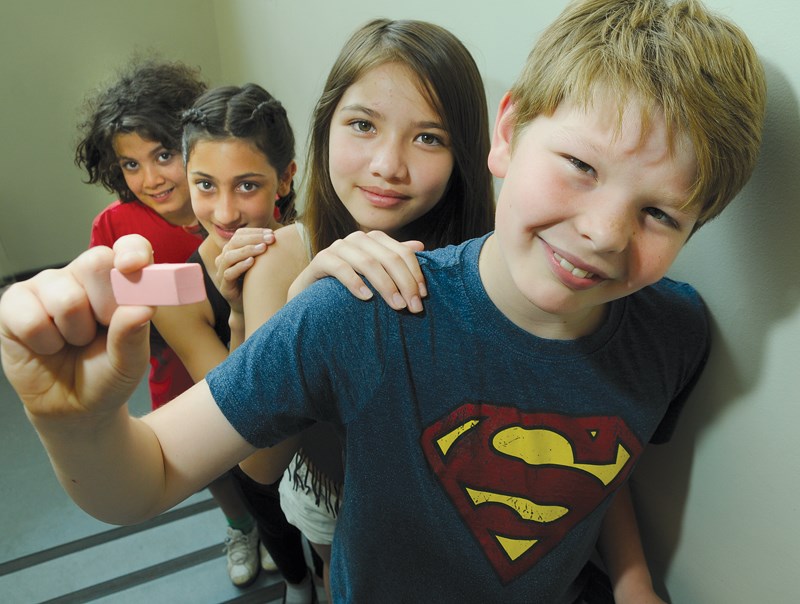When the members of Canyon Heights elementary teacher librarian Ian Cunliffe’s Grade 5/6 class heard about the recent raging wildfires that overtook Fort McMurray, they expressed a strong desire to help those affected.
Interested in channelling their enthusiasm, Cunliffe helped his 30 young charges brainstorm unique means of taking action. The idea that ultimately struck their fancy was the One Red Paperclip Project, showcased on an episode of 60 Minutes that he played for them. Undertaken by Kyle MacDonald, the initiative, inspired by the game bigger and better, saw the Quebec man barter his way up from a red paper clip to a home in Saskatchewan over the course of a year.
“They were stunned that someone could start with something so small and trade their way up. So we agreed that this would be a really fun way to trade something bigger and better for Fort McMurray,” says Cunliffe.
Three weeks ago the class launched The Eraser Project, starting their trading with a 10 cent eraser. The students began by bartering with other teachers in their school before venturing out into the wider community, going so far as to contact local businesses and politicians.
A blog, theeraserproject.com, is chronicling their progress, and so far they’re up to $400 worth of printing services from LinxPrint.
“We’re trying to get people to go and check out the blog and make us a trade,” says Cunliffe.
“We’ll keep trading until the end of the school year (June 30), and at that point if we have an item that would be suitable to help a family, we will donate it directly. Otherwise we will sell the item and give all the proceeds to the (Canadian) Red Cross’ Alberta relief fund,” he adds.
Cunliffe loves watching the reactions of his students when new trades come in.
“The classroom erupts, which is hilarious because normally I’m a strict disciplinarian. In my class you can hear a pin drop but in this case we celebrate it. The kids are absolutely thrilled,” he says.
What follows is an intense debate about the merits of the possible trade and then it’s put to a vote.
“It’s just a buzz of excitement throughout the room. I’ve never seen kids so eager to get to work on a school project before. It’s just a load of fun,” he says.
When asked why he decided to encourage his students to take on this project, Cunliffe is quick to respond.
“We’re not just raising students, we’re raising people and people need to have a sense of the world that’s greater than themselves (and) have empathy for others. When we can take real classroom learning, like goal setting and project management, which are part of the curriculum, and apply it to a real world task, when kids see that they’re actually able to make a difference in something that’s going on in the world around them that they see in the news every night at dinner, it’s incredibly empowering for them to realize, ‘Wow, I have skills and ability and I can make a difference.’ That type of thing is life-long learning.
“I would think 20 years from now they’ll forget the dry bits of math that I taught them but they will remember this moment where they were able to start with an eraser and turn it into something that could help make someone’s life a little better,” he says.
The dedication of his students to help others speaks to the strong community spirit shared by all those at the North Vancouver elementary.
“I feel very lucky to be at Canyon Heights, which has a really long tradition of creating good global citizens. … There is a spirit at the school of global awareness and contribution so it’s nice to be a part of that,” says Cunliffe.



